Mexico is home to around 1,128 species of wild birds, making it one of the world’s richest countries in bird diversity. These colorful, melodious birds are not just a visual treat—they also play vital roles as pollinators, seed dispersers, and pest controllers in ecosystems. Discover Mexico’s most representative bird species and their ecological importance below.
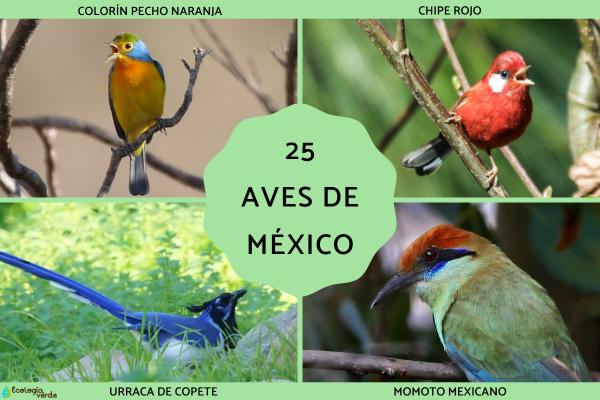
Key Representative Birds of Mexico
More Common Birds in Mexico
The Ecological Role of Mexican Birds
(1) Mexican Quetzal (Euptilotis neoxenus)
The Mexican quetzal is an emblematic, sacred bird of Mexico, inhabiting temperate pine and oak forests at 1,900–3,000 meters elevation. Males have bright green backs and chests, a black iridescent head, blue rump feathers, and a red belly and undertail; females have grayish heads and chests.
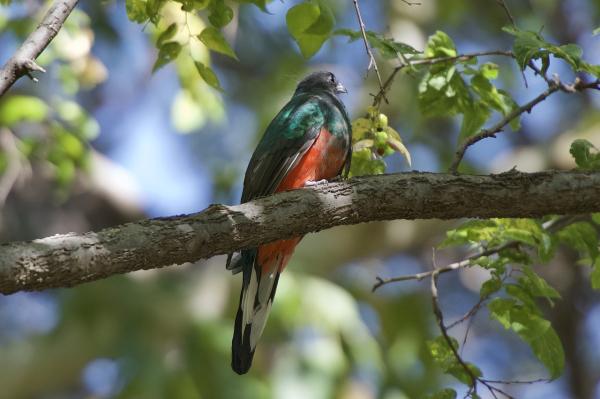
(2) Orange-breasted Bunting (Passerina leclancherii)
Endemic to western and southern Mexico, found in forests, scrublands, and open fields. Males feature blue dorsal plumage, green head, and brilliant yellow and orange on the underparts; females are olive-brown above. Diet includes seeds, fruits, insects, and small invertebrates.
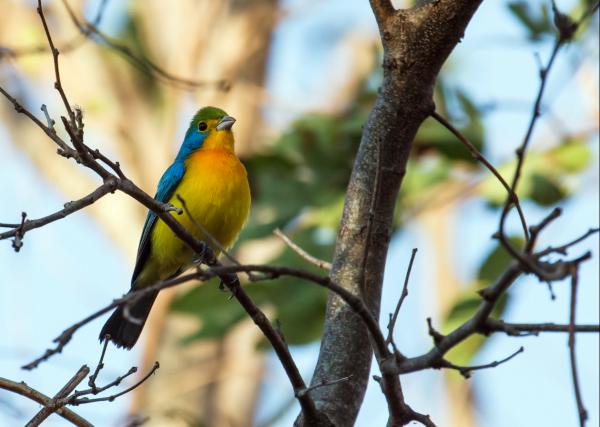
(3) Red-headed Tanager (Piranga erythrocephala)
Found in mountain forests from northwest to southern Mexico. Males have a bright red head, black eye mask, greenish back, and yellow underparts; females are duller, mostly greenish-yellow.

(4) Red Warbler (Cardellina rubra)
A Mexican highland endemic, this species is bright red with white or gray ear patches. It breeds in moist pine and oak forests at high elevations and descends to lower elevations in winter.

(5) Black-throated Magpie-Jay (Calocitta colliei)
Native to northwestern Mexico, this omnivorous bird inhabits low forests and tropical jungles. Features include a long tail, blue back, white belly, and striking black crest and throat.
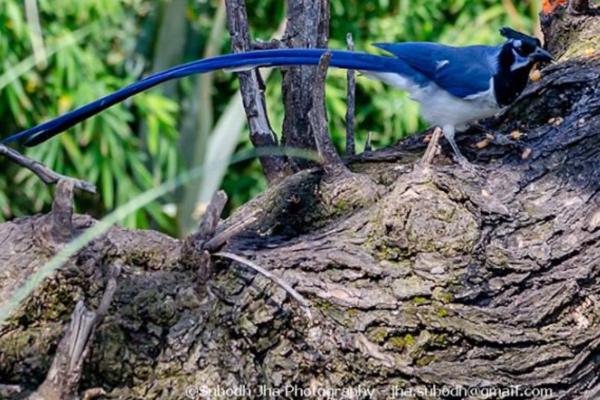
(6) Russet-crowned Motmot (Momotus mexicanus)
A large, striking bird from northwestern Mexico to eastern Guatemala, inhabiting arid forests and semi-open areas. Known for its pendulum-like tail feathers ending in racket tips.
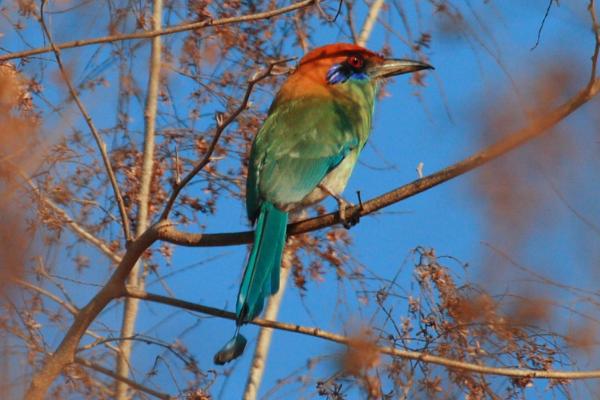
(7) Lilac-crowned Amazon (Amazona finschi)
A medium-sized parrot with green plumage, red forehead, and lilac crown and neck. Endemic to Mexico’s Pacific coast; classified as endangered due to habitat loss and illegal pet trade.
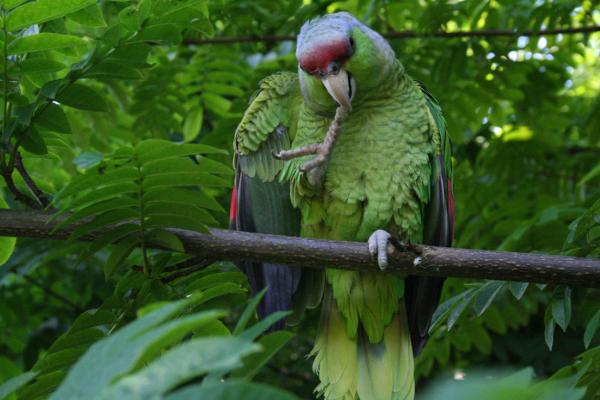
(8) Balsas Screech Owl (Megascops seductus)
A small, endemic raptor from west-central Mexico, living in thorn forests and open woodlands. Recognized by its short ear tufts and brown eyes; diet includes insects and small vertebrates.
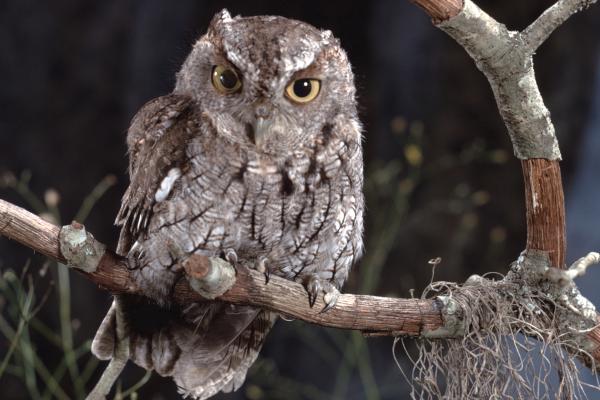
(9) Rusty-crowned Ground-Sparrow (Melozone kieneri)
Native to western and southern Mexico, found in shrublands, coffee plantations, and cropland edges. Notable for its rufous crown and nape, grayish-olive body, white chest with a central black patch.
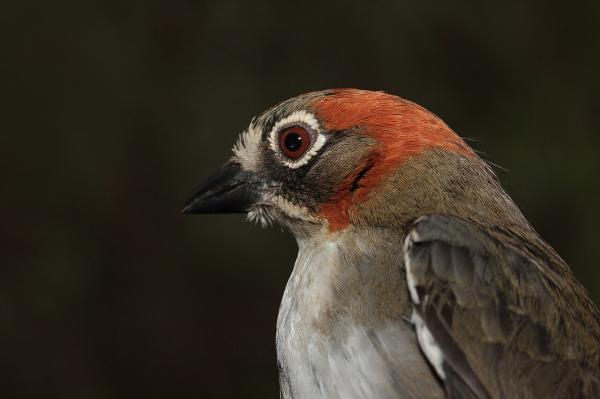
(10) Mexican Woodnymph (Eupherusa ridgwayi)
An endemic hummingbird from western Mexico, usually inhabiting humid subtropical forests, coffee plantations, and streamside areas. Classified as vulnerable by the IUCN.
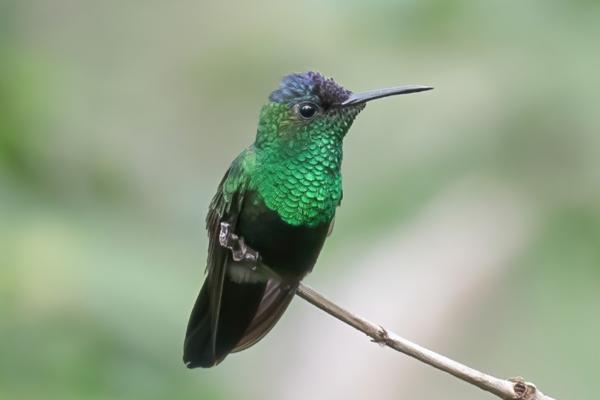
Sinaloa Gnatcatcher (Polioptila nigriceps)
Nelson’s Masked Yellowthroat (Geothlypis nelsoni)
Rose-bellied Bunting (Passerina rositae)
Ocellated Thrasher (Toxostoma ocellatum)
Chiapas Wren (Campylorhynchus chiapensis)
Collared Towhee (Pipilo ocai)
Masked Woodpecker (Melanerpes chrysogenys)
Gray-breasted Woodpecker (Melanerpes hypopolius)
Yucatan Amazon (Amazona xantholora)
Colima Pygmy Owl (Glaucidium palmarum)
Tamaulipas Pygmy Owl (Glaucidium sanchezi)
Citreoline Trogon (Trogon citreolus)
Mexican Rail (Rallus tenuirostris)
Elegant Quail (Callipepla douglasii)
Yellow-footed Gull (Larus livens)
Birds in Mexico play irreplaceable roles in pollination, seed dispersal, and pest control, enriching biodiversity and ensuring ecosystem health. Protecting birds and their habitats is vital for maintaining ecological balance and supporting sustainable development.
animal tags: Mexican Birds
We created this article in conjunction with AI technology, then made sure it was fact-checked and edited by a Animals Top editor.